Author: XU HongSource: Tsinghua University Art MuseumPublished on: 2024-06-25
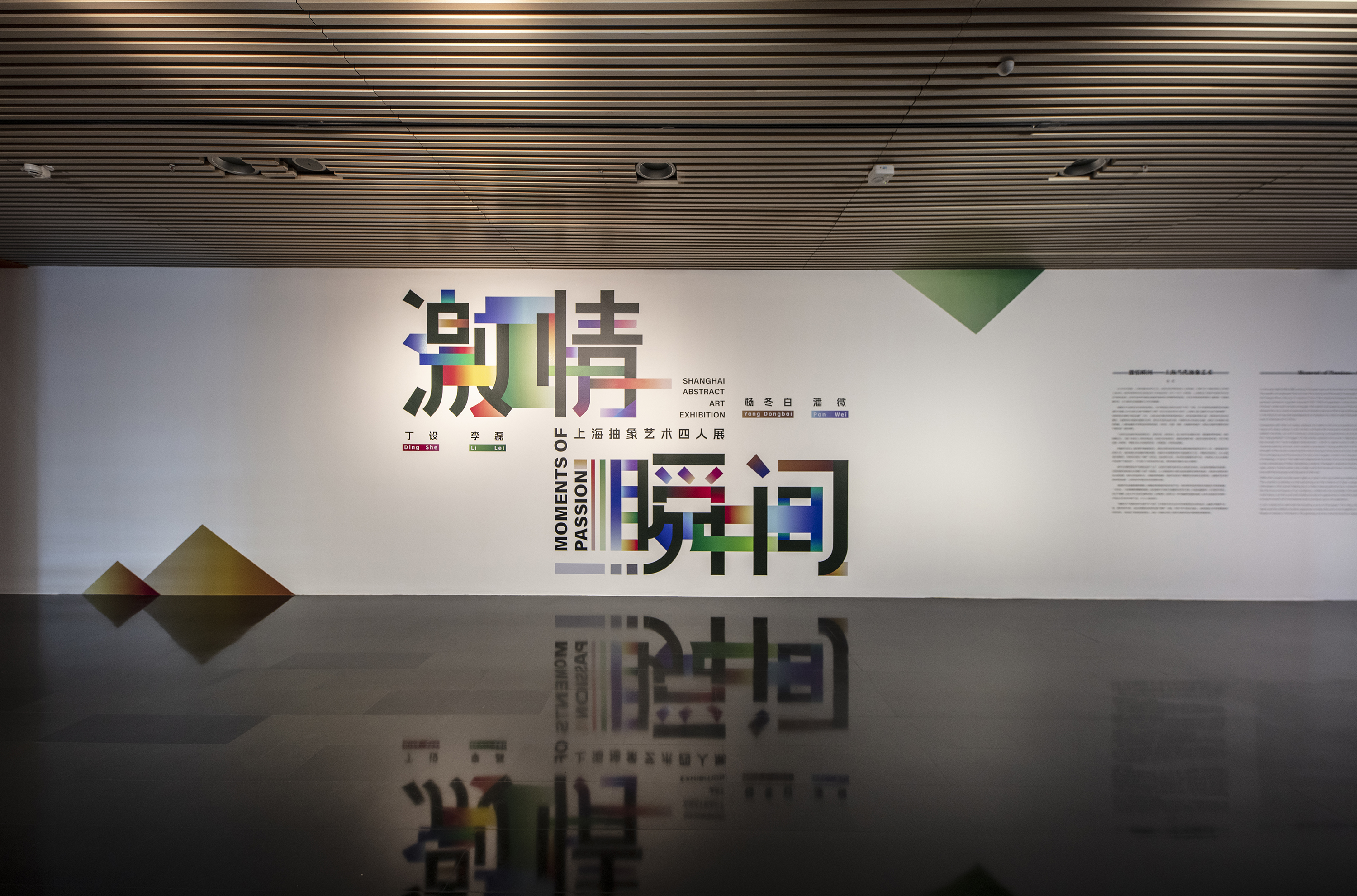
Compared with other art styles, abstract art seems to be more expressive of the “unisex” nature of urban culture. It will not be confused with classical romantic art because of its realistic narrative, nor will it endorse contemporary conceptual art out of its indulgence in the “interpretation” of images. On the whole, abstract art is more “objective and rational,” but except for “hard-edged abstraction,” which is particularly calm, most of it is characterized by lyricism and volatile expression. Paying attention to the texture and strength of the brush, exploring the restructuring of structure and color, and focusing on the overlapping and illusiveness of mood and imagery, modern art, because of its pursuit of ontology, is more in line with the independent function of art, and avoids being reduced to the subordinate of other disciplinary subjects. Shanghai's abstract art has its own special style, which is fashionable, fast, bright and full of sensual charm, showing a harmonious tone with the busyness and fast pace of the city.
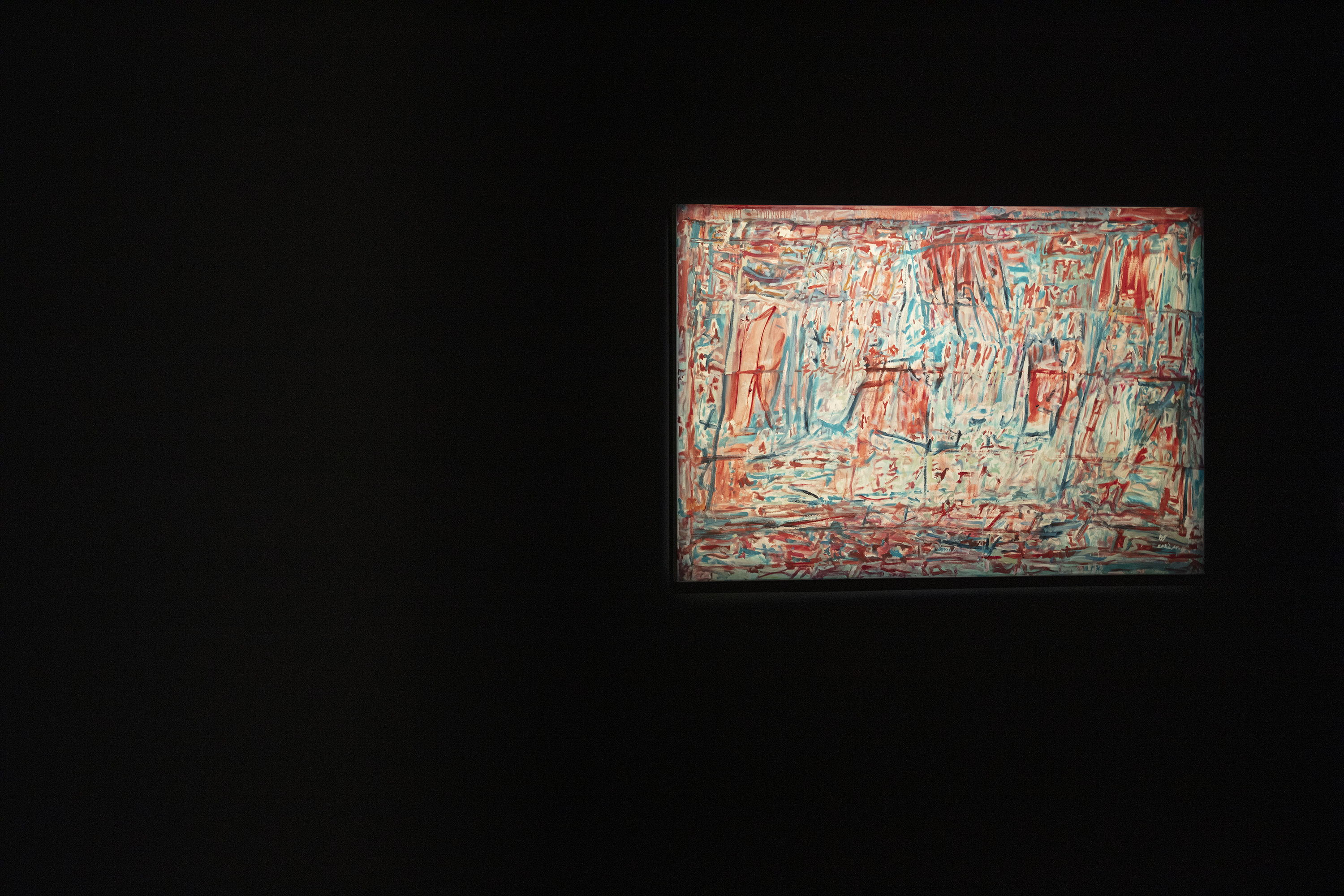
DING She's works are like neon lights at night in the city, flashing brightly and dreamlike. The colorful scratches on the paintings are like ribbons of light, wrapped with the information of the world, fleeting by in a flash, leaving behind only a melancholy track. It is like the time and space of our existence, visible but not touchable. His works are rich in implications, but the word and stroke provide an opportunity to take the subjective desire to know himself, full of excitement and curiosity to go on an adventure.
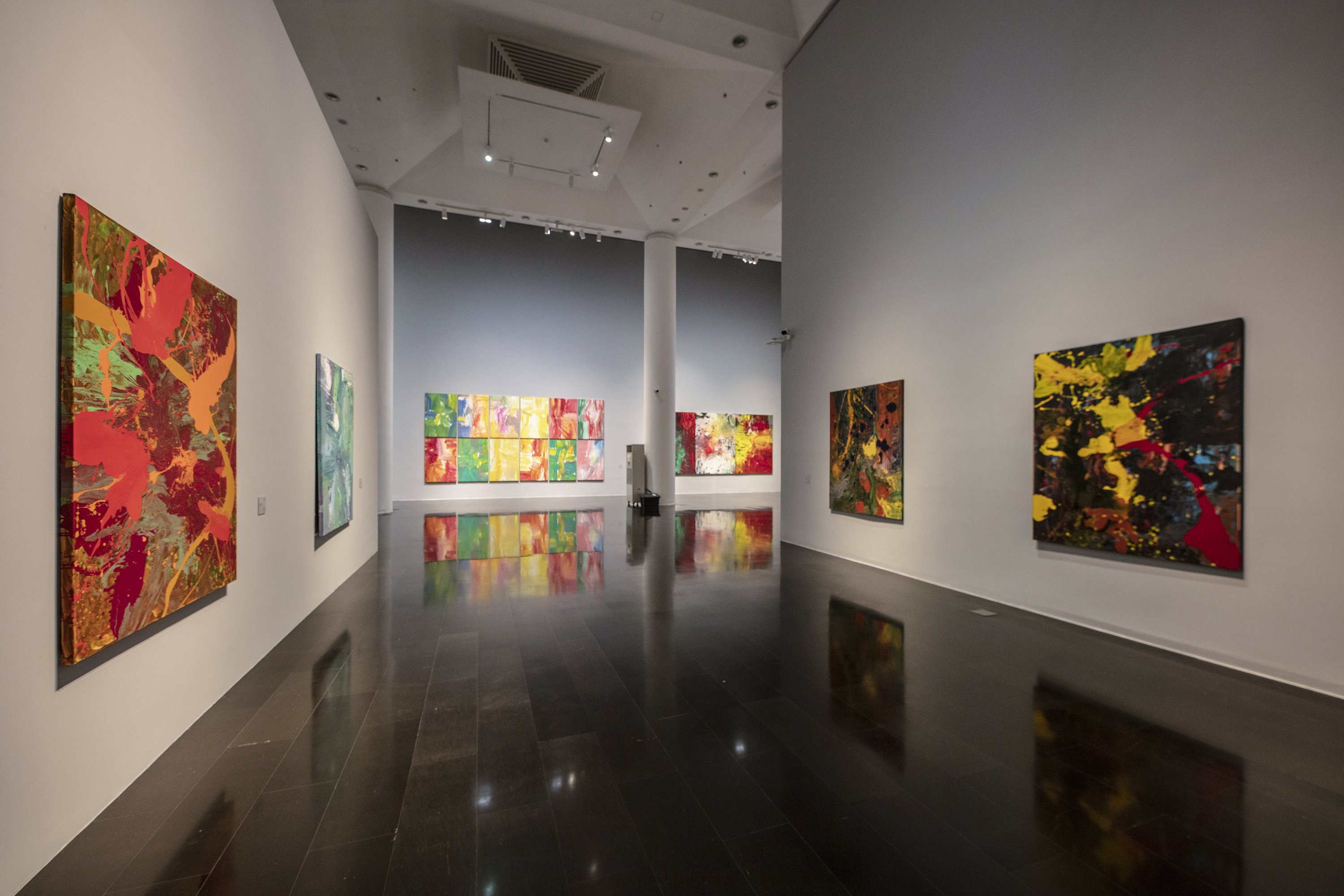
LI Lei's works fit in well with the bustling scene of Shanghai. The richly colored surface layers and the darkly turbulent grassroots strokes flow and cross together as if they were flowers of desire in full bloom. His paintings are also characterized by elegant and lyrical imagery, such as willow flakes in the spring breeze and wet magnolias in the rain, which bring back fond memories of the warmth of the human world. And those works titled “Zen”, although simple and light, ultimately echoes the urban atmosphere. Their difference from traditional literati’s pursuit of “emptiness and indifference” in the landscape lies not only in the distance of centuries of time and space, but also in the difference of environment and the state of mind.
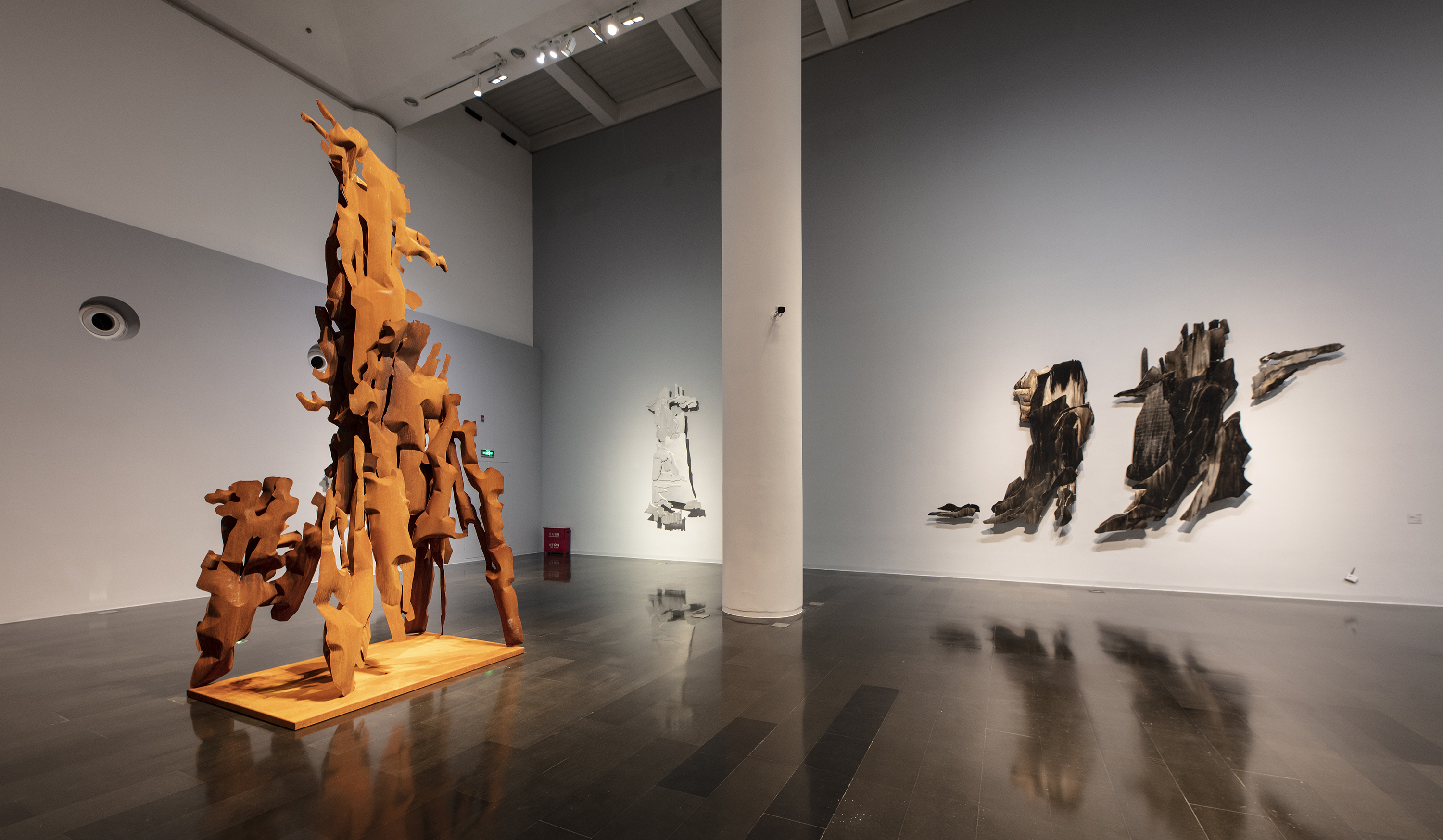
YANG Dongbai's sculptures are “landscapes” made of stainless steel, with flowing rhythms and lines that soften the original shape of the landscape into a rhythm of emotional ebb and flow. The rigidity of the material is transformed into a silky “smooth” surface, reminiscent of the soft, elastic skin carved out of marble. Its reflective character is like the rippling of water, the ripples of the wind, full of natural reverie. His works have changed the traditional spatial volume treatment of sculpture, adding the freedom of modern plane extension, making it as lively and dynamic as writing.
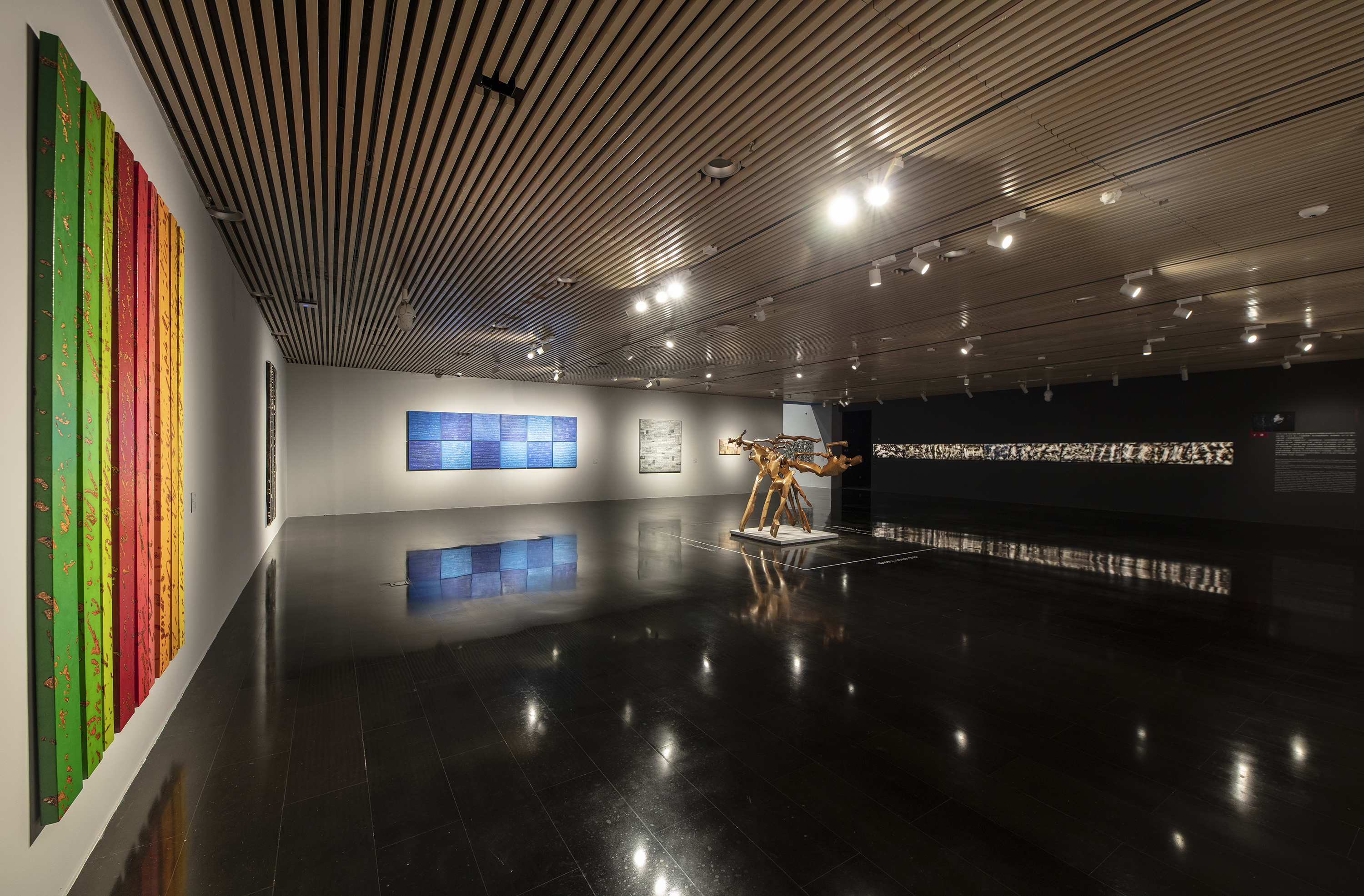
PAN Wei's works penetrate through thick curtains, as if one can smell the breath of history that has traveled through. Those floating linear objects are like the remains of shells and fish bones at the bottom of the sea, half of which are jadified and half of which are vaguely visible as fuzzy traces. He is also an artist who transforms words into abstract forms. In his abstract paintings, although the words are recognizable, they are no longer important. These words have been deconstructed and weathered, removing the edges and corners, and materializing into a touchable substance with thickness, resembling rare objects found in archaeology, with a mysterious aura from the ancient times, which makes present-day people think about it infinitely.
The creation of “Abstract Art” style is also inseparable from “experience,”and the artist still needs the revelation of the real world in the generation of forms. Abstract art focuses on dots, lines, surfaces and materials, and uses these elements to structure the “spiritual” connotation of the work and enrich it with individuality. This kind of experimentation makes art more pure, and at the same time highlights the significance of aesthetic vision. The audience will definitely obtain a new viewing experience from the works of the four Shanghai artists.